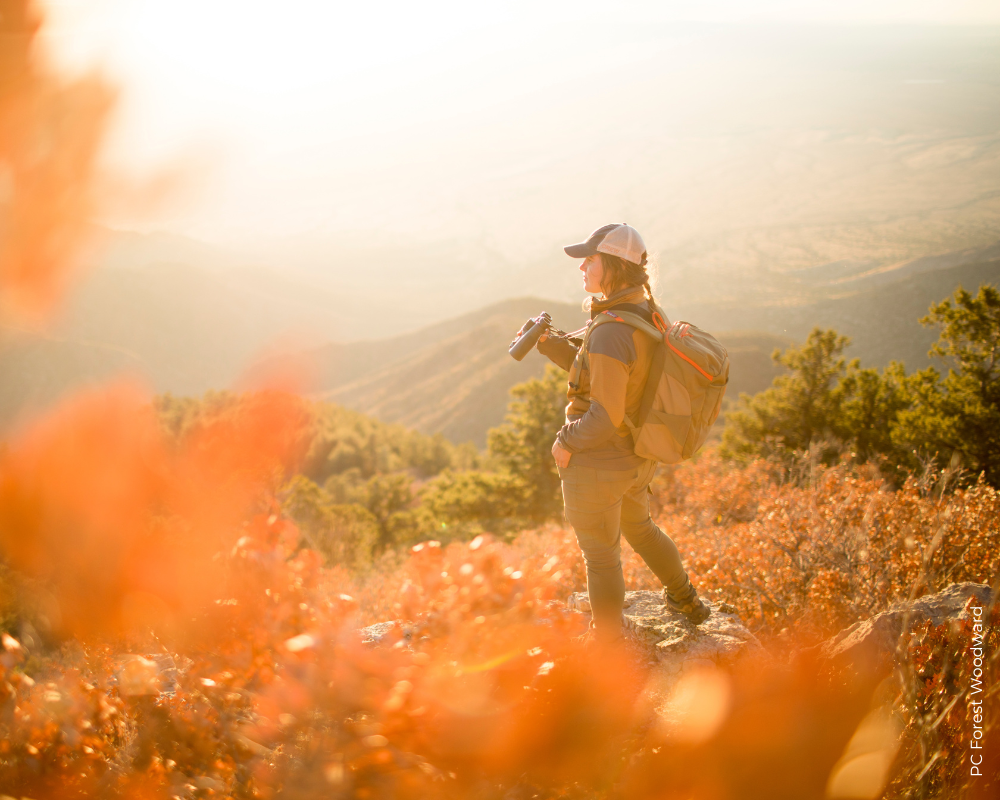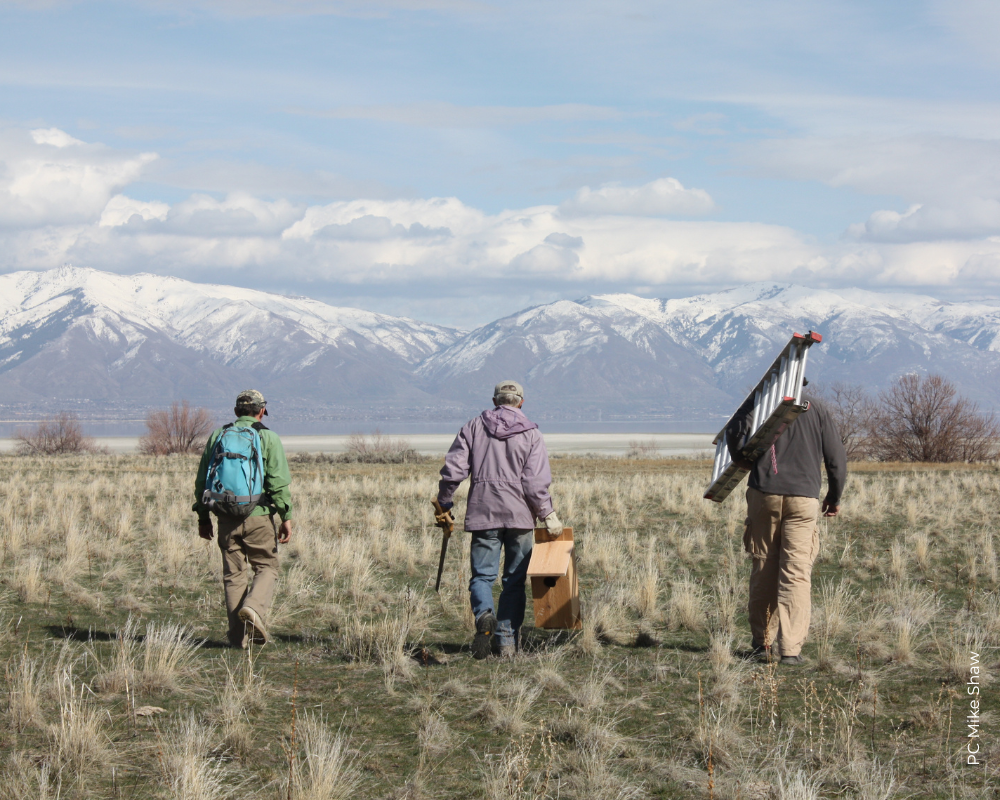Our Story
It all started with a few treks up the trailless slopes of steep western mountains in search of the migrating raptors. Then in 1986, nearly a decade after HWI founder Steve Hoffman first began his pioneering effort to learn more about raptor migration in the western U.S., HawkWatch International (HWI) was born.
Over the years, our efforts to sustain and protect these remarkable creatures have led us to study and learn from them during all aspects of their lives, from spring nesting to fall migration and winter survival. What we have learned has informed land managers, other scientists, and people like you about what raptors need to survive in a rapidly changing landscape.

Research
- Long-term monitoring of raptor migration across a network of 8 sites
- Community science investigating the declines of cavity-nesting raptors
- Investing in the next generation of conservationists through internships, scholarships, and more

Education
- Curriculum-driven school programs for students in grades K-12
- Community programs, including library programs, park popups, appearances at festivals, and paid, private program
- Supporting educators with STEM professional development

Conservation
- Evidence-based solutions to conserve raptors around the world
- Partnerships with governmental agencies and the private sector to implement conservation actions
- Investing in the globe’s most pressing raptor research and conservation
HawkWatch History
Climbing the Wellsvilles
The Wellsville Mountains of northern Utah is where HWI essentially began. HWI founder Steve Hoffman and colleague Wayne Potts discovered the Wellsville site in 1976 and conducted seasonal counts there.
The Western Foundation for Raptor Conservation
After a decade of migration monitoring, an official not for profit was formed. The organization was established officially under this much lengthier name. In 1990 we rebranded as HawkWatch International.
Golden Eagles In Decline
After analyzing our migration data, our team realized that Golden Eagles were in decline. This led to our long-term monitoring project measuring nestling survival, which we continue to run every spring and summer.
HWI CARES About our Community
With more and more data pointing to the decline of American Kestrels, our team began our American Kestrel Studies to monitor kestrels during the breeding season. This has since evolved into our Cavity Adopting Raptor Ecology Studies (CARES), where our team, alongside volunteer community scientists, monitors hundreds of nests housing American Kestrels, Western Screech-owls, and Barn Owls.
Following Forest Owls
In partnership with the Earthwatch Institute, HWI set out to learn more about understudied Forest Owl species. Through this work we hope to better understand how climate change may impact the forests and the food these birds rely on for survival.
Becoming Truly International
After years of dabbling in international work in our migration network, in 2019, HWI made the decision to finally go global. The program works with some of the most at-risk species from South Africa to Indonesia.
The In-hand Guide to Diurnal North American Raptors
HWI biologists Jesse Watson and Dr. Dave Oleyar, Hawk Ridge banding director Frank Nicoletti, and raptor expert Jerry Liguori published a photo guide book including information on molt, sexing, and aging for commonly captured North American diurnal raptors.
Providing Support Around the World
After identifying global raptor research and conservation priorities, we realized the most at-risk species were not receiving the funding they needed. Through our Global Raptor Research & Conservation Grant funding, we aim to increase diversity and inclusivity in conservation, all while building local capacity.
